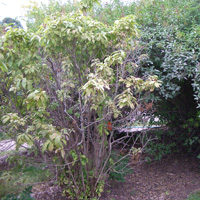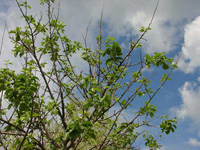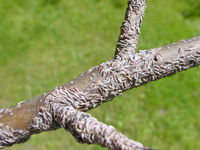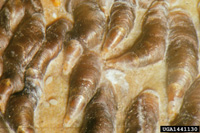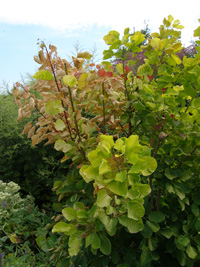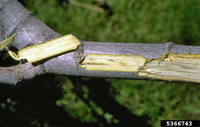Extension > Garden > Diagnose a problem > What's wrong with my plant? > Deciduous > Lilac > Leaves discolored yellow
Lilac > Leaves > Leaves discolored yellow
1 of 3
Witches' Broom
Candidatus Phytoplasma fraxini
- Dense clusters of short, thin twigs originate from one area of stem
- Leaves may be small, distorted and yellow
- Brooms are common at the ends of branches and clustered at the very base of the plant
- Entire canopy is pale green to yellow, some leaves with brown margins
- Branches may die and shrub will decline
- More information on Witches' Broom
2 of 3
Oystershell scale
Lepidosaphes ulmi
- Light infestations do not exhibit obvious symptoms
- Severe infestations can cause chlorotic, stunted foliage
- Dieback and cracked bark can result from heavy infestations
- Light to dark brown, elongated, 1/10 to 1/8 inch long oyster-shell shaped scales found on bark.
- More information on Oystershell Scale
3 of 3
Verticillium wilt
Verticillium dahlia
- Leaves on one to several branches turn red to yellow, wilt, die and fall off
- Dark olive to gray streaks are often visible in the sapwood if the bark is peeled back
- The entire canopy may show symptoms in a single season or take several years
- Symptoms are often most obvious in late summer and autumn but can occur throughout the growing season
- More information on Verticillium wilt




